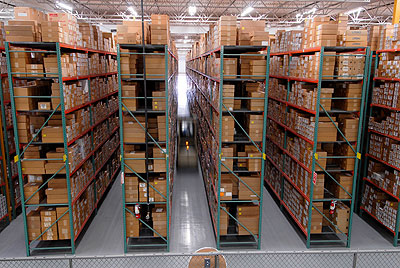Technology is always changing and evolving. It’s a simple fact. So how can you, as a manufacturer of electronic products, keep up? We know you can’t afford to keep every electronic component, be it an integrated circuit or specialty electronic part, on-hand without running out of space at your warehouse. Luckily, we’re going to let you in on the biggest little secret in the electronic parts industry. Surplus Electronics suppliers. You can find thousands of vendors that are buying and selling used and surplus electronic parts and electronic components. The majority of which, offer you warranties on the products they buy and sell.
The Surplus Electronic Industry is growing, right alongside with the technology parts it provides. That means better prices, better access to the parts you are looking for, and of course, better service. IC Plus is one such company. Located in Southern California, IC Plus has been buying and selling surplus electronic parts and integrated circuits for more than 20 years. IC Plus is known in the industry as paying the best price for a variety of components and integrated circuits. IC Plus has an easily searchable database of parts, a painless transaction process and offers you a number of ways to sell your surplus electronic parts through lot purchases, on-site consignment or off-site consignment.
Lot Purchases
IC Plus has the ability to buy your company’s surplus inventory on a lot basis or outright. A common problem with surplus electronic parts are certain buyers will only choose to purchase a few items. That leaves you with an excess of a number of electronic components. IC Plus wants to be there for you for you in the long-term, whatever your excess needs.
Onsite Consignment
In some instances, the only way you might be able to sell electronic components and integrated circuits to sell it onsite. In this case, what IC Plus does is negotiate a purchase price for all of the surplus electronics that you would like to sell. In this scenario, IC Plus requires exclusive access to the products to ensure availability. In addition, IC Plus requires you to provide someone from your company to be the point person to contact to process orders and update inventory.
Offsite Consignment
One of the most cost-effective ways to rid yourself of surplus electronic components is to allow IC Plus to consign your goods from our facility. Our warehouse is secure and large enough to accommodate all of your surplus goods.
Having your excess products out of your facility and into our warehouse, not only makes room for you, but it allows us to better sell your electronic components. With the parts on hand, we are able to advertise the electronic parts a customer wants as in-stock. In addition, we are able to ship a part by next-day deliver to our extensive, loyal customer base.
By having us handle the selling aspect of your surplus means that you don’t have to dedicate someone from your staff to act a as a liaison and saves man hours.
Buy Electronic Components
In addition to offering the best prices for companies to sell off their surplus of electronic parts, IC Plus also is a leader selling electronic components and integrated circuits to those who are looking for a specific electronic component.
Check out IC Plus’s growing database of surplus electronic components today.








